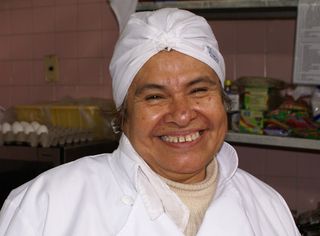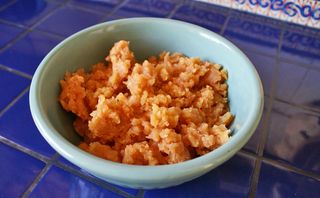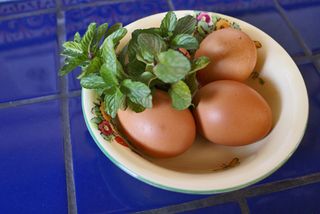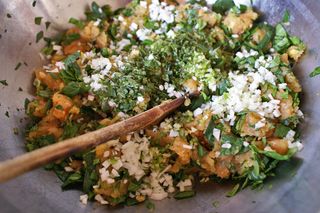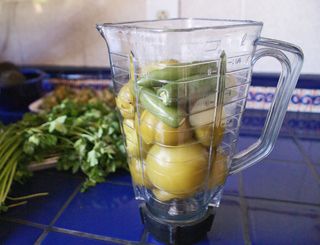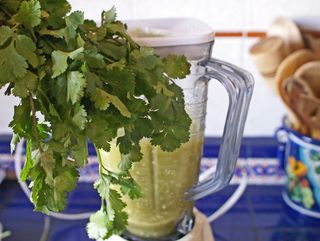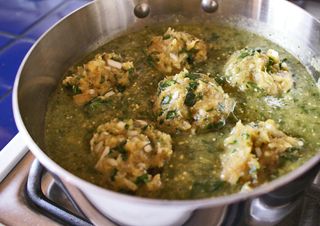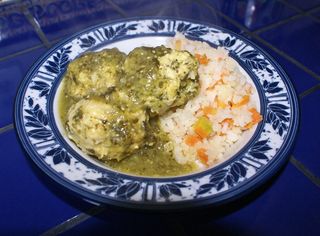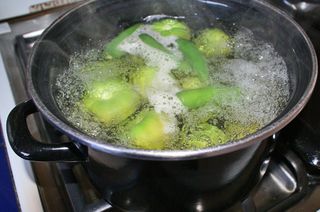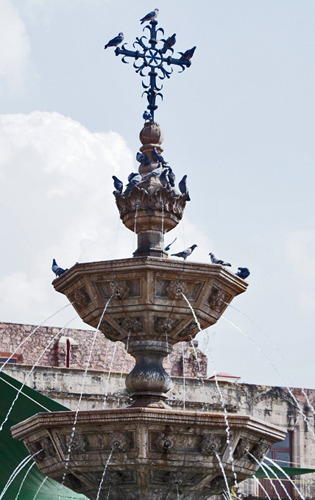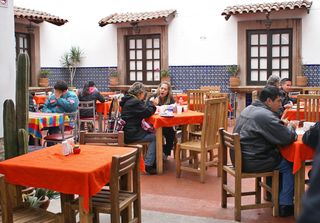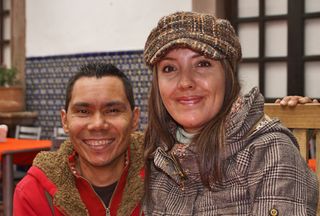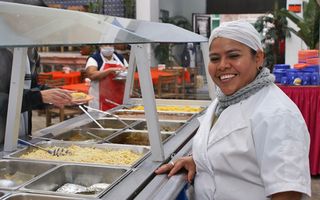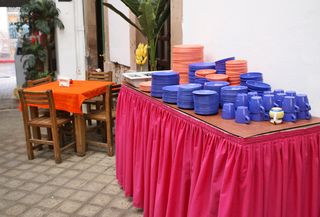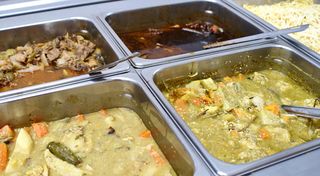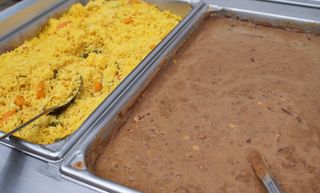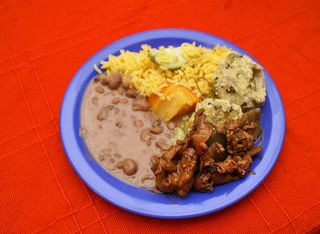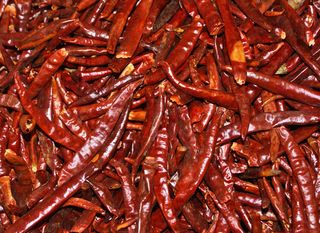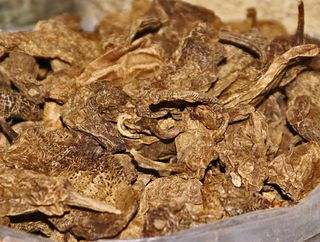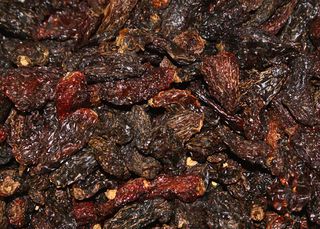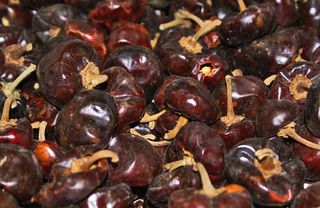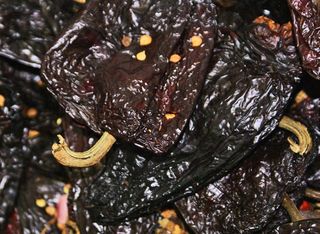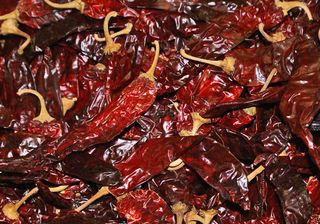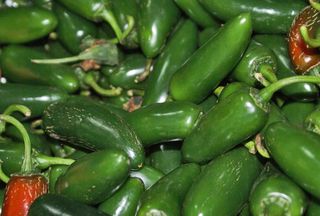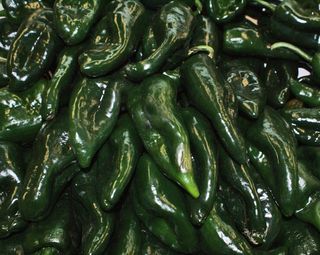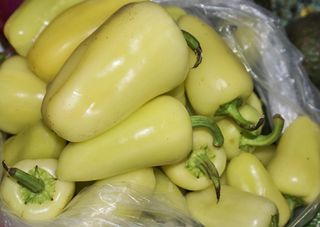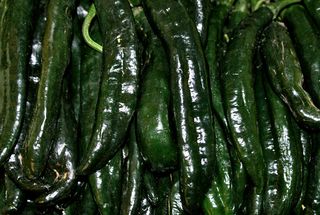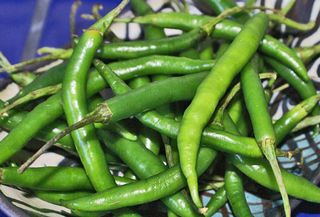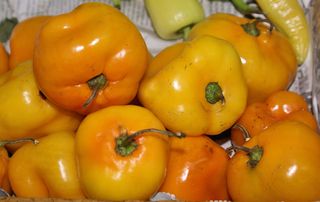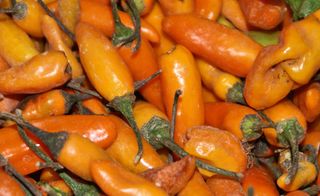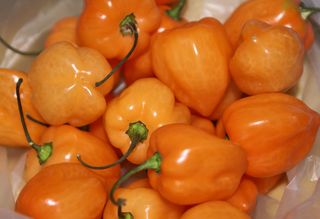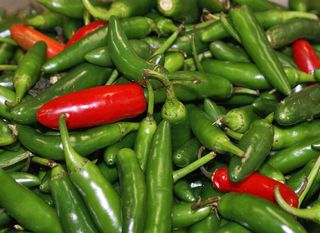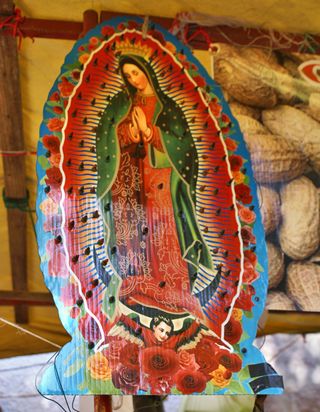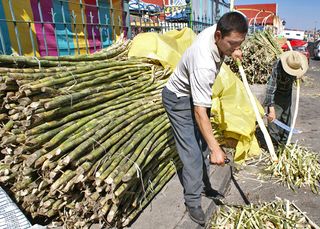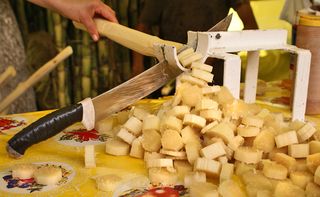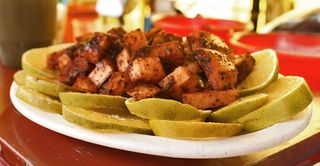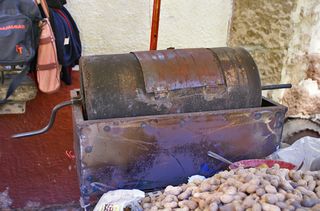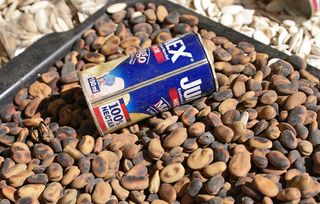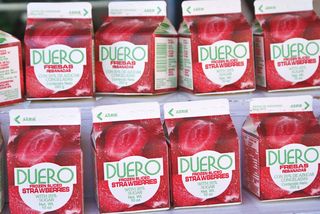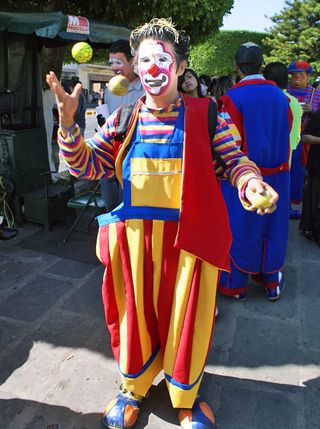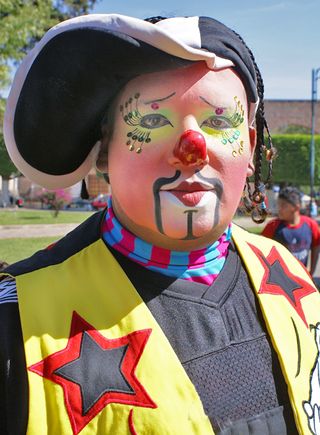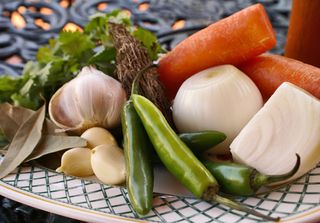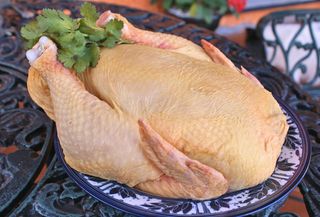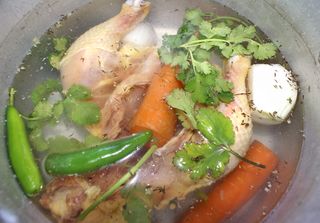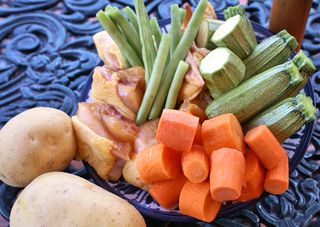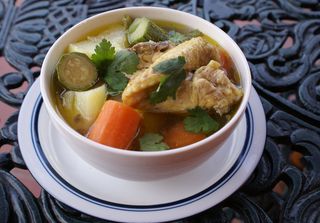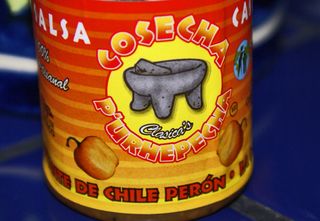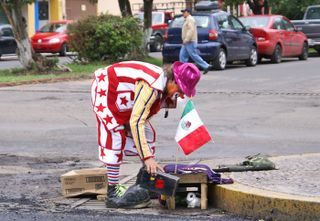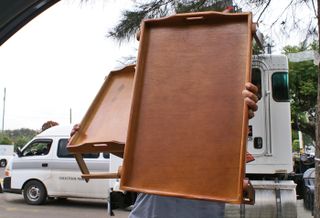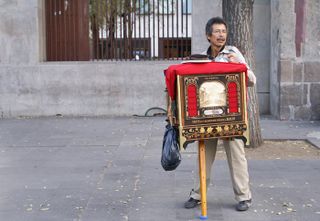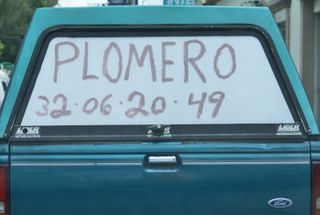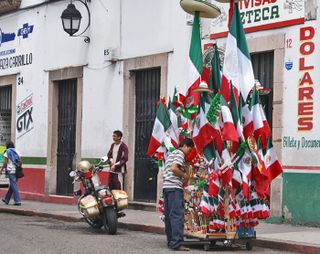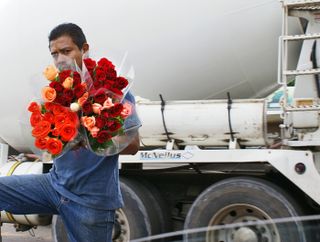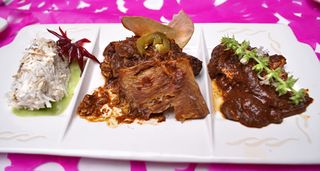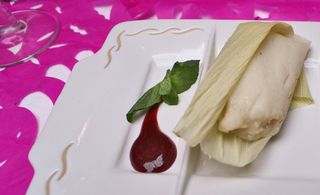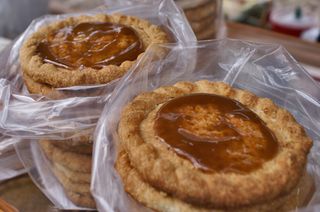
A gorgeous monarch butterfly rests in the sun at El Rosario, Michoacán butterfly reserve. Unless otherwise noted, all photos are courtesy of Mexico Cooks!' very generous friend (and superb photographer) Steven Miller. Steve's photos from El Rosario are dated February 2008.
One of nature's great mysteries continues to confound scientists the world over. Millions upon millions of fragile monarch butterflies, which live their lives primarily in the United States and Canada, trek nearly 2,000 miles a year to spend their winters in the isolated oyamel (fir) forests of Michoacán and the neighboring State of Mexico. A tiny area in Mexico, a 65 square mile patch of tall mountains, hosts these miraculous migrating lepidoptera. Four mountaintop butterfly sanctuaries– El Rosario, Sierra
Chincua, El Campanario, and Cerro Pelon–are public.

Heaven on Earth in the mountains of eastern Michoacán, land of the monarchs. Photo courtesy Google Images.
In 2003, National Geographic writer John Roach published, "Researchers have believed for a long time that the butterflies use the
sun to navigate, but they were not certain as to how the butterflies
adjust their direction throughout the course of the day as the sun
moves across the sky." His article continues, "Four to five generations separate the monarch populations that make the
migration, so the butterflies that make the trek to Mexico are the
great, great grandchildren of the previous generation to have made it.
The ones that fly south have never been to Mexico before, they get
there by pure instinct, lay
their eggs on milkweed and then die." The butterflies that overwinter in Michoacán are called the Methuselah generation.
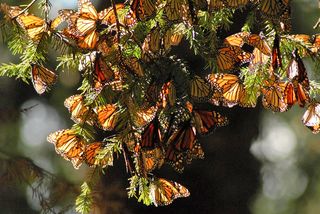
Butterflies hang thick on every tree, every branch, every surface at El
Rosario. They rest during the chilly Michoacán winter nights,
fluttering awake at daybreak and flying high as the sun warms their
wings.
It was only 35 years ago that the first scientific investigators, guided by a local resident, visited the then-isolated mountain region of Michoacán and were dumbstruck to see the monarchs in their winter habitat. "It was as if we had discovered the eighth wonder of the world," said Dr. Lincoln Brower. Dr. Brower is currently a research biologist at Sweet Briar College, specializing in the overwintering, conservation, and biology of the monarch butterfly. Dr. Brower serves on the board of directors of the Monarch Butterfly Fund.**

Every available surface–including the top of your head–can be a landing strip!
In the town of Contepec, Michoacán, a small boy, Homero Aridjis, born in 1940 as the youngest of five Greek/Mexican brothers–used to climb Cerro Altamirano near his home to look at
the monarch butterflies that flooded the forests for almost four months
in the winter before they left again, heading north. No one living in his area
knew where the butterflies came from or where they went. "When I
began to write poems," Aridjis said, "I used to climb the hill
that dominated the memory of my childhood. Its slopes, gullies, and
streams were full of animal voices–owls, hummingbirds, mocking birds,
coyotes, deer, armadillo. The natural world stimulated my poetry."
But of all of these animals, he says the monarch butterflies were his
"first love." Aridjis won Mexico's very prestigious
Xavier Villarrutia Award at age 24 and years later, monarchs were still
making their appearance in his writing. His 1971 book, El poeta niño,
includes a beautiful poem that goes like this: "You travel/by day/ like a winged tiger/ burning yourself/ in
your flight/ Tell me/ what supernatural/ life is/painted on your
wings…."**
In 1985 Aridjis formed a group
called the Grupo de Cien (Group of One Hundred) intellectuals, which issued
a statement about the environmental deterioration of the area and
convinced the government to provide official protection to the forests
sheltering the butterflies. The formation of this group led to an award
for Aridjis, already the recipient of several literary awards. This time
it was the Global 500 Award given to him by the United Nations
Environmental Program.**

The warmth of midday sees the Michoacán sky thick with monarchs. This photo, dated March 2009, is courtesy of the wonderfully knowledgeable and completely charming Betsy McNair of My Mexico Tours.
In 1986, after realizing that only the core area of each sanctuary
would be protected but not the buffer zone, Aridjis was able to get Cerro
Altamirano included in the decree, along with El Rosario, Sierra
Chincua, El Campanario, and Cerro Pelón. The government designated them as
protected areas. The sanctuaries were established to ensure the
continuation of the migration and of the genetic bank of the numerous
species that lived there. In spite of on-going deforestation and a severe plague of bark-destroying insects in the remaining oyameles, the butterflies continue to arrive.**

Natural stained glass: sunlight filtered through fir needles and a monarch's wings.
Beginning at the end of January, 2010, a tremendous and terrible natural disaster hit the Michoacán mountain towns nearest the monarch butterfly sanctuaries. Frente frío #28 (cold front #28) lashed the tiny area with heavy hail, followed by atypical out-of-season rains. The violent storms lasted for nearly a week. The Río de San Pedro (St. Peter River), which flows around Angangueo, had been deliberately re-routed several years ago from its natural pathway. During the intense rains of the days-long storm, the mountainside river sought its natural boundaries, causing enormous mudslides that devastated all of Angangueo. More than 30,000 human inhabitants of Angangueo and surrounding towns were left homeless, fleeing the floods with only the clothes on their backs. To date, 35 people are known dead, swept away or buried by the fierce currents of roiling water, boulders, rocks and mud. Many more human residents of the area are still missing.
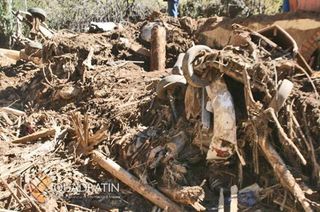
Devastation in the central plaza, Angangueo. Click on the picture for a larger, clearer view. To the right and left of center you can see ruined automobiles, washed away in the currents. Photo courtesy of the newspaper Quadratín.
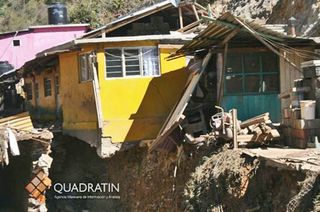
Homes crushed by raging mud and water, Angangueo. Photo courtesy of Quadratín.
Current information about the condition of the monarch butterfly reserves has been difficult to obtain. Human rescue efforts and relief have been primary in the last ten days. Little by little, news of the monarchs has filtered out of their mountain sanctuaries. According to the February 11, 2010 edition of Morelia's daily newspaper La Voz de Michoacán:
- Hundreds of trees in the reserves fell due to saturation and extreme softening of the earth at their roots.
- Approximately 10% of the tens of millions of monarchs died due to blows from intense hail. The butterflies could withstand the rain, but not the heavy hail.
- Mexico's Fondo de Desastres Naturales (Natural Disasters Fund) will designate six million pesos to investigate all damage to the sanctuaries' forests and institute approximately 1500 temporary jobs to repair what can be repaired in the reserves.
- Mexico's Comisión Nacional Forestal (Conafor) said that ProÁrbol, its national reforestation organization, will have 100 million pesos specifically designated for replanting the devastated areas, plus another 200 million pesos which were originally allotted for other uses that will now be given to urgent reforestation efforts.
According to La Voz de Michoacán, access to the butterfly sanctuaries is prohibited until authorities further assess the on-going risks at the reserves. Rosendo Caro, director of the Mariposa Monarca Biosphere Reserve, said that although this measure is difficult for those who depend on butterfly tourism for their income, risk to tourists, damage to the reserves and access highways, and the possibility of harm to the butterflies themselves make this temporary closing necessary.
Others report that the Sierra Chincua reserve is currently open, but only if you drive in from the east (Maravatio) side through Santa María. The entry to Chincua via Angangueo is closed. Cerro Pelón may also be open, but only through Zitácuaro.
Dr. Brower, writing for the MBF (Monarch Butterfly Fund), has just posted more information about the situation in the area of the reserves. After telling the history of the disastrous storm, he writes that the first priority in the devastated region is human life and safety, but that the MBF is also vitally concerned about the mortality of the butterflies and the conditions at the reserves. For the latest information, read his excellent article here.
If you or someone you know has scheduled a tour of the monarch reserves in the near future, please verify with your tour provider that he or she knows for certain that the reserve you plan to visit has in fact re-opened.

Brushed by sunlight, 2008-generation monarchs rest in oyamel (fir) boughs at El Rosario reserve.
Links to monarch butterfly conservation and preservation sites:
Monarch Butterfly Fund
Monarch Watch
World Wildlife Foundation
Journey North
Links to monarch butterfly tourism and informational websites:
My Mexico Tours
Planeta Ecotravel
Monarchs Across Georgia
To donate to the Monarch Butterfly Fund, click MBF Donations to go directly to their donations page. You can donate by check or with a credit or debit card. The MBF will use your monetary assistance, no matter the amount, to its fullest potential. Your help is urgently needed.
___________________________________________________
**Thanks to the OAS (Organization of American States) for portions of the article Masters of Migration by Adriana Herrera Téllez, which originally appeared on July 1, 2009, in the English-language edition of AMERICAS.
Looking for a tailored-to-your-interests specialized tour in Mexico? Click here: Tours.
